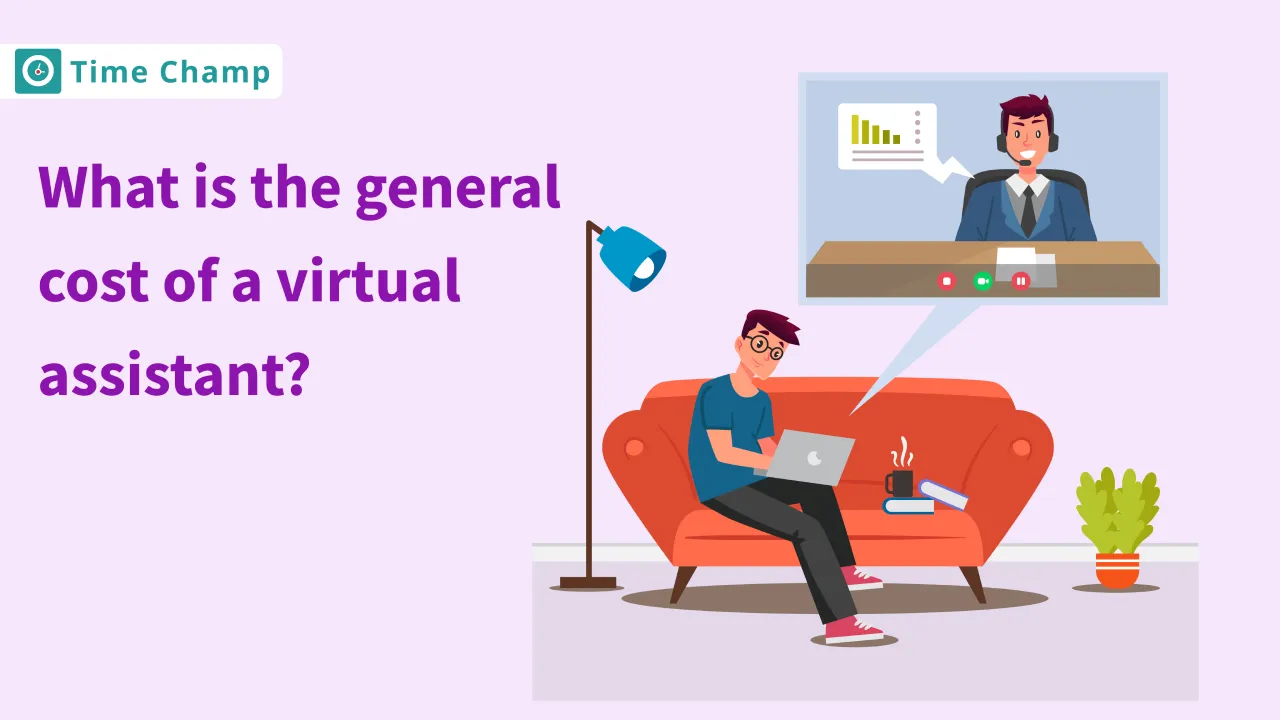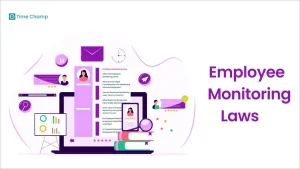Most businesses that want to outsource to other countries constantly keep worrying about the cost of virtual assistants.
The cost of a Virtual Assistant keeps varying depending on different factors so it is important to find a virtual assistant that fits your budget. let’s discuss the factors that affect the cost of a virtual assistant, and the minimum and average cost of a virtual assistant.
The most notable function of a virtual assistant in the world of business today is the smoothing of business operations. Yet beforehand, there is a need to clarify what is the cost of a virtual assistant. Here in this guide, we’ll make the distinction between the average and minimum cost including factors that affect their prices. By the end, you will have a clear picture of what you will be paying when considering the cost of the virtual assistant.
What do Virtual Assistants Do?
A virtual assistant is an independent professional who specializes in providing administrative support to clients remotely, often from a home office. Common tasks handled by virtual assistants include scheduling appointments, scheduling phone calls, coordinating travel preparations, managing emails, web designing, graphic designing, customer care services, content writing, etc.
The Average Cost of a Virtual Assistant
An Entry-Level Virtual Assistant’s cost may range from anywhere between 15$-25$.
Whereas Freelance Virtual Assistants can charge anywhere between 18$-35$.
The average cost of a virtual assistant can vary based on various factors, including the complexity of the work, necessary experience, required skills, and the number of hours needed to complete the assigned tasks.
How to Calculate the General Cost of a Virtual Assistant
1. Define Your Needs and Scope of Work
Before focusing on budget estimations, it is necessary to first select your precise needs which should include the extent of work your virtual assistant will be handling. See the job description and the personal specifications, to ensure that they are clear and specific.
2. Conduct Market Research
Start off with technical marketing research to find out the rates of virtual assistants with the required skill sets and level of experience. Consider such variables as regions of the world, speciality knowledge, and the demand by a particular industry when rating the pay. Utilize online platforms, industry groups, and professional networks as priceless sources for the extraction of pricing data.
3. Assess Skills and Experience
Define the skills and experience required for your project or assignments. Specialized skills and extended experience may make one command a higher pay rate. For a simpler job, you can hire a virtual assistant with less experience and lower wages.
4. Consider Additional Costs
Moreover, pay attention that besides the hourly rates, you might be charged other fees to hire a virtual assistant. This may involve payment for initial setup, software subscriptions, communication material, or other resources that are required for teamwork. Plan for the occurrence of these costs so that it does not take you by surprise in the future.
5. Estimate Work Hours
Calculate the number of work hours needed to accomplish the tasks or projects that will be assigned to the virtual assistant. Think about things like the complexity of the task, the time allotment, and the project deadlines. Keep the estimates realistic in order to have proper cost calculations.
6. Calculate Total Cost
After you have all the information gathered, find out the total price of employing a virtual assistant. Calculate the product of the estimated working hours and the virtual assistant’s hourly rate, after identifying further costs in the previous steps. This will give you the full info about how much total money you will need.
7. Evaluate Long-Term Value
Then think about the value you will get in the long run and the benefits of hiring a virtual assistant over only the cost. A very competent virtual assistant can get you more time, improve your productivity and let you concentrate on the most important business activities. Measure the predictable return on investment and test it against the calculated cost to derive the final value proposition.
The Average Cost of Different Virtual Assistant Services
| Type of Virtual Assistant Service | Average Hourly pay (in the US) |
|---|---|
| Data Entry | 10$-20$ |
| Personal Assistant | 15$-25$ |
| Research | 12$ |
| Social media management | 35$-70$ |
| Book Keeping | 15$ |
| Content Writing | 25$ |
| Email Management | 20$-50$ |
| Customer Service | 10$-60$ |
| Calendar Management | 12$-40$ |
| Project Management | 19.74$ |
Source: wishup.co
Different Methods to Pay your Virtual Assistant
When you hire a Virtual Assistant for their services from a virtual assistant company then you are likely to pay them for the services offered to you either through online transactions or through offline transactions.
Let us discuss some of the payment methods that you can use to pay your Virtual Assistant.
Choose the Correct Payment Structure
1. Hourly Rate
The hourly rate method includes a client paying the virtual assistant for the actual time the assistant works on the tasks or projects.
- How it Works: Virtual assistants keep track of time and send in timesheets which are used for billing purposes using timesheets and time-tracking tools.
- Advantages: Hourly rates can make for flexibility, as clients can ‘pay-per-hour’ what they paid for. It’s applicable, e.g. to tasks of different difficulty levels or tasks with non-determinable duration prediction.
- Considerations: Clients should maintain the channels of communication open to control the hours of a virtual assistant and billing transparency.
2. Fixed Price
By means of the fixed price model, the clients are engaged to pay a concretely defined amount for a certain job or task.
- How it Works: The range of work, deliverables, and timeline are agreed on between the client and VA at the start-up, and one fixed price is applied to the entire project.
- Advantages: Fixed-price arrangements give you that much-needed clarity and certainty in the aspect of budgeting and costs. Clients know what the project costs in total, no matter whether the virtual assistant spends more or less time on it.
- Considerations: It is critical to pinpoint the objectives accurately in order to avoid confusion or scope creep. Clients should also set up milestones or checkpoints to review Project progress and ensure on-time delivery.
3. Retainer Fee
With the retainer fee method, clients pay for a predetermined service duration in which the virtual assistant is under their employment for a set number of months at a time, normally per month.
- How it Works: The client meets the virtual assistant on the number of hours or availability included in the retainer fee. The virtual assistant will set this time aside for the client every month, even if the service client does not use all of the time.
- Advantages: Retainer fees allow stability for a client and a virtual assistant, and they are the best way to make sure that the virtual assistant is here when needed. It’s perfect for customers who require regular or frequent interaction.
- Considerations: Clients should determine the number of hours covered in the retainer fee, all of the unused hours, and the procedure for requesting, new hours after the retainer.
4. Project-Based Payment
Project-based payment can be defined as remuneration paid for project execution with a fixed amount on the completion of a particular task or project without accounting for the time spent by the virtual assistant.
- How it Works: The clients and virtual assistants discuss the work scope, deliverables, due date, and the cost of the whole project at the beginning of the contract. Generally, payment is made in instalments or only after the mission accomplishment.
- Advantages: Project-based pay offers budgeting certainty and clarity in terms of expenditures and expenses. The client knows in advance, the total cost of the project. As such, he/she can plan appropriately.
- Considerations: Among other things, a proper description of the work scope and deliverables will help to prevent any disputes or misunderstandings in the future. Clients should set specific milestones or time points of evaluation now and then to know if the project is on target.
5. Performance-Based Compensation
Performance-based pay means that virtual assistants are appraised according to the results they yield (for example, sales, leads, or revenue); their pay is also determined by these outcomes.
- How it Works: Clients and most VAs agree on commission rates or percentages in advance, and such commission is charged on the accomplishments made.
- Advantages: This model aligns of interests of both parties in a project enhancing the motivation and collaboration of parties towards project success. It is specifically tailored for those looking for sales, marketing or business development.
- Considerations: Performance metrics and tracking mechanisms should be clear and provide a way to keep accountability and fair compensation. Virtual Assistants should have a passion for their work ‘efforts if they are to yield maximum results.
6. Hybrid Model
The mixed system incorporates the components of several payment mechanisms, thus making it possible for clients and virtual assistants to compose the payment structure to their liking and preference.
- How it Works: Clients and a virtual assistant can agree on the combination of hourly rates, fixed prices, retainer fees, or project-based payments for various tasks or projects.
- Advantages: The hybrid model provides flexibility and versatility since clients can select the most appropriate method for each particular task or project. It fills the spectrum of clients’ requirements.
- Considerations: Having the payment terms and agreements for each payment option defined beforehand will prevent confusion and misinterpretations. The client and VA should interact openly and transparently to make sure that they share interests and come to a mutual understanding.
Use Popular Payment Methods Which are Widely Spread Across Different countries
One benefit of employing Virtual Assistants is that they are location-independent and thus can work from anywhere in the globe. Thus, it is necessary to make payments in the most popular ways for payees throughout the world.
Let’s first check out some popular payment platforms which are used to pay Virtual Assistants.
1. PayPal:
PayPal has set the standard as a prominent online payment system by providing safe transactions, purchases, and financial management worldwide. The popularity of PayPal is owed to its cutting-edge security measures, multiple payment options and seamless integration, which are accepted by both individuals and organizations worldwide. Being user-friendly, its interface and mobile app support mobile transactions. On the other hand, PayPal provides buyer and seller protection which adds to the reputation of the solution as trustworthy and reliable for online financial payments.
PayPal supports over 20+ currencies worldwide and you can also set recurring payments to save time.
PayPal charges high transaction fees and it might also take 2-3 business days to show up in your bank account.
2. Payoneer:
The Payoneer provides services of cross-border payments to companies, professionals and independent workers and does so promptly and safely. Payoneer makes funds transfer a lot easier, lets users access their earnings and allows them to manage several currencies in their finances.
The platform offers users multiple payment options including bank transfers, prepaid MasterCard cards and digital wallets enabling them to withdraw funds and make payments around the world. Payoneer enjoys the confidence of millions of users across the globe for its reliability, security, and effectiveness in conducting international transactions.
Payoneer charges an annual transaction fee of $29.95 and a currency conversion rate can increase to 3.5% per transaction.
3. Wise:
Wise, formerly known as TransferWise, is a widely used international money transfer service recognized for its instant, transparent, and cost-effective currency transfer and exchange solutions.
It offers a straightforward and economical platform for individuals and businesses to conduct global transactions, featuring minimal fees and competitive exchange rates.
Through Wise, users can efficiently and securely transfer funds to international bank accounts, and also access multi-currency accounts and debit cards to facilitate spending in various currencies.
With a global user base exceeding 4 million, Wise has revolutionized international payments by introducing pricing transparency and user-friendly interfaces.
Wise is widely available in 50 countries around the world and can transfer up to 50 types of currencies and the money conversion charge is only 0.41%.
Use the Best Performance Monitoring Software
Using performance monitoring software is a must because most Virtual Assistant Companies are using hourly pay rates so you need to keep track of how the Virtual Assistant is utilizing the given paid time.
By using a Performance Monitoring tool business owners can do exactly know:
- How long the project actually took
- How long the Virtual Assistant took to complete the work?
- To know if the Virtual Assistant is actually working or just passing the time to increase their hourly pay.
- To know if the VA is actually working on your project or somebody else’s project at the given time.
- To monitor their activities and to stop them from getting diverted from the assigned work.
Fortunately, you can use Time Champ a performance monitoring and productivity tracking software to monitor your Virtual Assistants.
Time Champ is a one-stop solution for all your concerns about Virtual Assistant!
Sign up now and avail all the benefits of the best monitoring of your projects.
Signup for FreeBook DemoWhat’s Time Champ?
Time Champ is an excellent software for performance monitoring and time-tracking used by many companies for monitoring employee productivity.
You can use Time Champ to actively monitor your Virtual Assistant activities and pay them according to the work done.
Let us see how Time Champ can help you manage your Virtual Assistant Payments.
1. Task Tracking
Time Champ’s Task Tracking feature allows employees to manually add each task and monitor the time spent on each task you can also get notification updates on each task.
This feature tracks the productive time, non-productive time, and neutral time spent which cannot be modified by the employees or Vas. This Feature gives accurate information about how much to pay to the Virtual Assistant fairly according to the work done.
2. Payroll Management
Time Champ’s Payroll Management feature helps businesses pay each Virtual Assistant for their billable hours. Time Champ’s Payroll feature automatically calculates the Virtual Assistant’s pay and lets you pay that amount with the payment method of your own choice.
3. Accurate Project Reports
Time-tracking task by Time Champ will automate your timesheets. This system automatically logs work hours and tasks, generating a near-error-free invoice. So that you can ensure paying your Virtual Assistant correctly.
4. Employee Monitoring
Time Champ’s Employee Monitoring feature helps businesses track and monitor every activity of the employee or Virtual Assistant. This feature can track all the apps and websites visited by the VA and the time spent on each website along with the apps categorized as productive, non-productive, and neutral for easy analysis.
If there are no keyboard strokes or mouse jigglers detected for a certain time that your company has chosen then a dialogue box will appear asking if the user is working or not, if the user does not respond at that time then the software will count that time as idle time and automatically stops tracking time for the task.
Here you can easily detect the idle time of your Virtual Assistant and deduct the pay from the total cost.
Conclusion
In conclusion, knowing the typical expenses associated with hiring a virtual assistant is crucial for businesses and individuals seeking remote support. While rates vary based on factors like skills, experience, and location, understanding these costs helps in budgeting and decision-making. By weighing the benefits of hiring a virtual assistant against the costs, businesses can efficiently use remote support to improve operations and achieve goals within budget limits. Understanding virtual assistant costs is key to making the most of remote assistance in today’s business world.
Ready to optimize your virtual assistant's performance?
Sign up today for seamless task management and enhanced productivity!
Signup for FreeBook DemoFrequently Asked Questions
The expense associated with employing a virtual assistant is subject to change depending on various factors, including their proficiency, background, geographical location, and the particular tasks or services needed.
Indeed, virtual assistants may adopt hourly rates, based on project rates, or monthly retainer fees, contingent upon the arrangement and the complexity of the tasks.
Depending on the arrangement, additional costs such as software subscriptions, communication tools, or project management platforms may be required. It’s essential to discuss these potential costs upfront to avoid any surprises.
To ensure you get value for your investment, clearly define your requirements, communicate expectations clearly, and assess the virtual assistant’s skills and experience before hiring. Additionally, consider starting with a trial period to evaluate their performance.
To discover a dependable and economical virtual assistant, contemplate seeking referrals from peers or professional networks, researching respected virtual assistant agencies, or utilizing online platforms tailored to linking businesses with virtual assistants. Make certain to assess their portfolios, verify references, and conduct interviews to identify the ideal match for your requirements.
You can track the cost-effectiveness of hiring a virtual assistant by monitoring their productivity, the quality of their work, and the impact on your overall business operations. Keep track of key performance indicators and regularly evaluate whether the benefits outweigh the costs.







